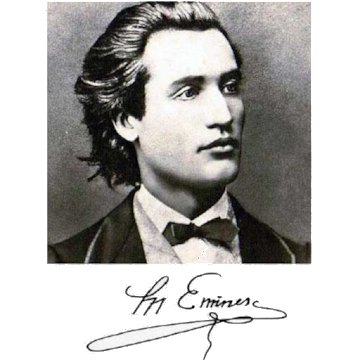On Hungarian territory and Romanian territory (in the area of Oradea) there are, after Island, the greatest reserves of thermal springs in the world, the healing waters of the hundred of springs are unique in Europe and they contribute every year to regain the health for many thousands of people. The water of some thermal springs is potable and it helps to heal various renal diseases, digestive system and metabolic diseases. Anywhere there is drilling is gushing out springs of thermal water with temperatures between 30ºC and 70ºC or springs with curative waters rich in salts and mineral substances.
From the 1300 fountains with thermal water recorded for now in Hungary 270 of them are used as baths and the number of springs with curative effects is 139. Over that water fields there have been building thermal baths, hydros, swimming pools and hotels that are offering various services. There is almost no town that does not have thermal bath.
In Hungary the culture of baths have important traditions. Good conditions, the professionalism and the accumulated experiences, as well the traditional hospitality of the Hungarians assure a various range of offers.
When the border of Roman Empire was laying along the Danube, on the current territory of Hungary was lying the Panonia province, and its capital, Aquincum (aqua means water in Latin language) was located in the place where today is Buda (one of the two cities that, when they developed well enough the formed one: Budapest). Until now the archeologist discovered in Hungarian capital 21 baths dating the Roman times. The pipe system, as well the baths with mosaic ornaments found in the villas of wealthy Romans evoke the local traditions of balneary culture over 2 millennium old.
In the XVIth century Hungary was occupied by the Turks. It is possible that the thermal springs to have the decisive role in this 150 years occupation. From the architectural monuments of that time there are distinguished the baths that are functioning now, for example the baths „Rác” and „Rudas” from Budapest, or the ones from Eger, city located in the north of Hungary. These baths were built at the beginning of the XVIth century. Usually the bath „Rudas” can be visited from men and women but in different days.
Eger, so called the city of thermal baths, of students and of wine, is considered to be one of the most beautiful baroque cities of Hungary. It is an millennial episcopal residence and it can preen on an rich historical past and valuable historical monuments, one of them is the northernmost minaret in Europe. Eger is as well the country of passional wines: in the centuries old cellar from the “Beautiful Lady”valley can be tasted the well-known wine called Egri bikaver (Bull blood). The swimming pool with curative water, open all year, recommended for the diseases of locomotor organs have seven pools where the water is recommended for healing the rheumatic diseases. A special view is offered by the spring with thermal water from the border of nearby town, in Egerszalok.
Hajduszoboszló is the most known resort for treatment and amusement in the est of Hungary, it is considered as the “Mecca of rheumatics”. The town is at the margins of the well known Hungarian steppe Hortobágy, 220 km away from Budapest and 20 km away of Debrecen and it is known because of the thermal water discovered by dr. Pávai Vajna Ferenc as his researches. 75 years ago started the treatments with the mineral thermal water that is gushing out from 1100 meters depth. A 2-3 weeks cure have a rate of healing of 90% for the chronic motor, gynecological and skin diseases. The salty iodate steams that are rises from a surface of 10.000 m² creates the specific micro-climate of these baths. Because of the therapeutic effects of the thermal water the resort is well know in the world. Last years it have been done great modernizing the balneary resort with the purpose of rising to the European level and creating a tradition for generations in the field of balneary tourism. The 25 hectares swimming pool, the lake for boating, also the recently fit up Aqua-Park creates a special destination for the sick people that are searching the healing as well for the people that are searching to have fun.
Miskolc-Tapolca is a balneary and climatic resort located in the suburbs of the city Miskolc, only 6 km away of it, in the north west of Hungary. The slightly radioactive thermal waters are well known from medieval times because the curative miraculous influences in the treatment of heart and nervous system problems, high blood pressure and digestive disorder. Miskolc Tapolca is a place for nature lovers. The treasure of this region is the cave with thermal water Tavas, transformed later in Barlangfurdo. The water have eroded there galleries in the rock during millenium, it is a place unique in Europe where you can swim in the thermal water that is gushing out directly from the rock, you can take advantages from the water massages under the waterfall, you can admire the deposits of calcite with elements of thermal water vividly.
Over 100 springs discovered until now in Hungary are in Budapest, these feed almost 50 baths. The one thousand years anniversary from the foundation was celebrated with the building of some monumental structures, in that period were constructed the most beautiful bath of Budapest – „Széchenyi” and „Gellért” (the end of XIXth century and the beginning of the XXth century).
Budapest is the only metropolis and capital in the world where there are active more the 100 thermal springs and fountains with a daily flow of about 70 million liters of water. The number of the thermal baths from the city fed with thermal water from natural springs or fountains are close to fifty, one of them is a Turkish bath preserved in the original state, but also swimming pools or elegant bubble baths. The hospitals and the luxury balneary hotels also benefit from the thermal springs.
The ruins of Roman cities, the military camps, the baths and the water pipes from the time of the Empire can be seen even today in Budapest. In the Aquincum Museum, among the ruins and the vestiges of the old city can be also admired a portable hydraulic organ built in 1228.
The unique location of Budapest, the panorama of the Danube and the Andrássy Avenue are on the list of the UNESCO World Patrimony. In this town it happens something all the time – the festivals, the cultural programs and the events are following very fast.





















